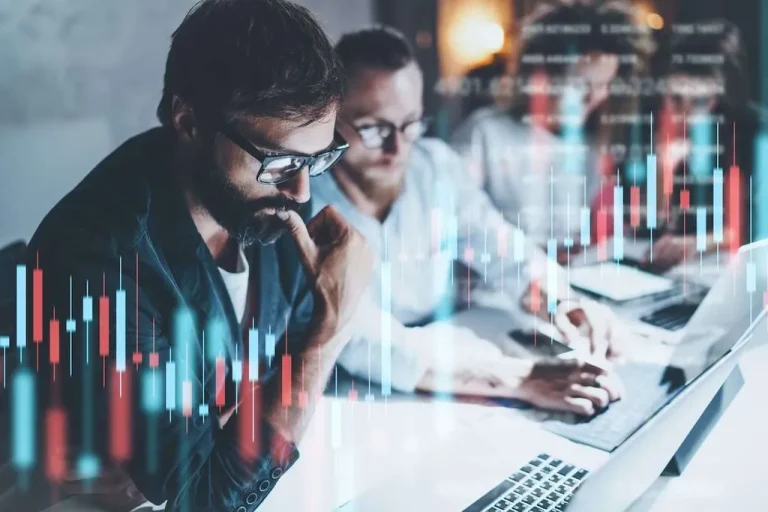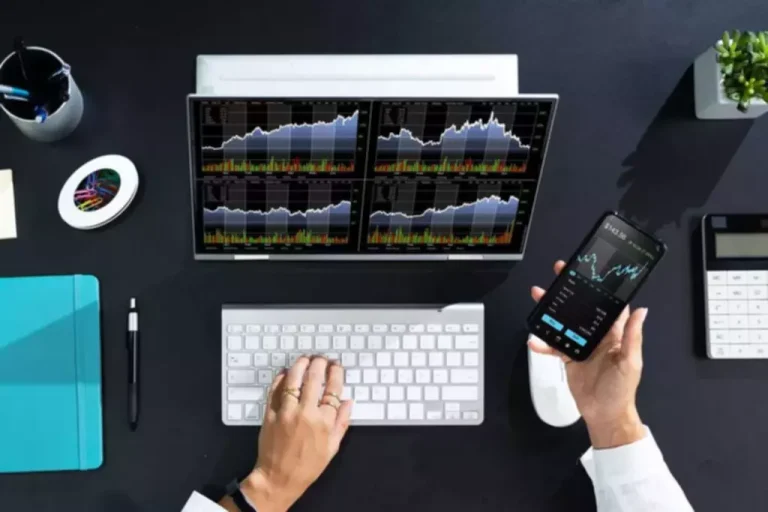FinTech
Top Crypto Liquidity Providers in 2024 6 Best Cryptocurrency Liquidity Providers
Content
Furthermore, B2Prime can connect brokers with more https://www.xcritical.com/ than 115 Forex pairs, 22 crypto CFD pairs, spot metals, indices, and spot energies through the OneZero, MT5, and PrimeXM platforms. CySEC, Cyprus’ financial regulator, presents a regulatory environment within which licensed financial services businesses should work. When a financial asset could be quickly and easily changed into cash without depreciating in value, it is referred to as having sufficient financial liquidity. Besides cash, foreign currency (FX), cryptocurrencies, or stocks are among the most liquid assets. Financial liquidity is a crucial component of every market since it indicates the efficiency at which a financial product may be traded without depreciating in value.
Search code, repositories, users, issues, pull requests…

The users who deposit tokens to a liquidity pool are called liquidity providers. The liquidity providers receive liquidity pool tokens (LP tokens) which represent their share of liquidity provider vs market maker ownership over the liquidity pool. The LP tokens are used to track the shares of users, withdraw their funds, and calculate the fees the protocol has to pay to each one. Token trading on a decentralized exchange (DEX) is a process where individuals exchange digital assets, or tokens, directly with one another, without the need for a central authority or intermediary. In a DEX, trading is facilitated by smart contracts on a blockchain, which automatically execute trades based on predetermined criteria. The liquidity of a token in a DEX is a critical factor that influences this trading process.
The Evolution of Liquidity Pools
Basically, the extent to which a particular asset may be swiftly purchased or traded on the market at a rate representing its actual valuation is referred to as liquidity. Due to its ease, speed of conversion into other assets, and global acceptance, cash is regarded as the most liquid asset. In this article, we will explain liquidity, what a liquidity provider is, and how it works. Besides that, we will discuss what features a trustworthy liquidity provider offers as well as who are the best liquidity providers in the industry. Opportunity cost matters not only to the project owner, but also to any other liquidity provider. Games make the most sense on blockchains with low fees, such as Polygon or ImmutableX.
MiCA Regulations and Their Impact on the Crypto Industry
This can result in buys being executed at higher prices and sells being executed at lower prices. More liquidity also means faster transactions, as there are more funds to go around. Upon providing a pool with liquidity, the provider usually receives a reward in the form of liquidity provider (LP) tokens. These tokens have their own value and can be used for various functions throughout the DeFi ecosystem. To retrieve the funds they deposited into the pool (plus the fees they’ve earned), providers must destroy their LP tokens. Illiquidity occurs when it is not possible to sell an asset or exchange it for cash without a significant loss of value.

The workshop will provide attendees with a fundamental understanding of DeFi, enabling you to prepare for DeFi’s growth, participate in the DeFi ecosystem, and also contribute to its evolution. EMURGO and the Institute of Blockchain Singapore are hosting a 2-day workshop on DeFi in early 2024 with speakers from EMURGO, EMURGO Academy, Coinbase Singapore, and more DeFi-related projects. A hot wallet is a crypto wallet that secures crypto private keys within an interface that is connected to the internet.
For brokers seeking the deepest possible liquidity options, Advanced Markets remains a powerhouse choice. With over 15 years of experience and direct market access to tier-1 deep liquidity pools, Advanced Markets delivers flawless pricing matches and liberal liquidity options. When other liquidity providers add to an existing pool, they must deposit pair tokens proportional to the current price. If they don’t, the liquidity they added is at risk of being arbitraged as well. If they believe the current price is not correct, they may arbitrage it to the level they desire, and add liquidity at that price.
Liquid providers profit from the spread by offering competitive prices to buy from or sell to market participants. X Open Hub prides itself on offering institutional-grade liquidity with unparalleled freedom of choice. With an extensive selection of financial products and lightning-fast execution speeds, X Open Hub empowers brokers to provide optimal trading conditions for their clients. Whether it’s liquidity provision or back-office support, Finalto delivers comprehensive trading solutions to meet the evolving needs of brokers in 2024 and beyond.
Other types of financial institutions play key roles in shoring up the liquidity of various asset classes. For instance, securities firms and other financial companies serve as designated market makers (DMMs) for the New York Stock Exchange. DMMs are among the exchange’s core liquidity providers, responsible for the availability and orderly trading of an assigned list of stocks. This means they take the other side of the trade when there is an imbalance of buying and selling in the market.
Over 50% have made more than 10 on-chain transactions (compared to runner-up zkSync Era’s 34%). The prices of assets on an AMM automatically change depending on the demand. For example, a liquidity pool could hold 10 million dollars of ETH and 10 million dollars of USDC.
When a company goes public on a stock exchange, it selects an underwriter to manage the process. The underwriter buys the stock directly from the company and then resells it in large batches to large financial institutions who then make the shares available directly to their clients. The activities of core liquidity providers sustain many routine practices in the market, such as hedging. In the commodities markets, for instance, farmers and food processing companies invest regularly to protect their businesses against declines or increases in future crop prices. Core liquidity providers help make this possible by ensuring that there is a liquid futures market for agricultural commodities. Anytime anyone provides liquidity is making this bet that the two assets won’t change in price vis a vis each other, and the fees will provide the profit.
- Trading Forex directly with liquidity providers or banks is typically referred to as “Direct Market Access” (DMA) or “Straight Through Processing” (STP) trading.
- Acting in favor of such an activity would lead to a mammoth capacity load on the blockchain, forcing the end-users to pay a large fee.
- I constantly challenge myself to produce content that has indispensable value for its target audience, letting readers understand increasingly complex ideas without breaking a sweat.
- In order to stay aware of the factors determining each market’s volatility and liquidity and to make profitable purchases as a result, you need also pay close attention to the financial events.
- Bank accounts, loans, insurance, and similar financial products may not be accessible for various reasons.
- Opportunity cost matters not only to the project owner, but also to any other liquidity provider.
- The basic liquidity pools, such as at Uniswap, are using the constant calculated by reproducing the quantity of both tokens within the pool.
B2Prime is a regulated global Prime of Prime (PoP) multi-asset liquidity provider that caters to both professional and retail customers in the global markets. Its main investment products are leveraged derivative CFDs (Forex, metals, commodities, indices, and cryptocurrencies). The only way you can have a well distributed token is you provide liquidity for trading in and out of it. So let’s get into covering measuring how much liquidity you’ll need and how to setup a liquidity pool for your token. ~50% have interacted with more than 2 DEXes (compared to runner-up zkSync Era’s ~30%).

For each L2, we took all wallets that provided liquidity within the first 24 hours after launch. Then, we observed those wallets’ cumulative on-chain activity up to November 24, 2023. As of November 24, 2023, the wallets that LP’d to Optimism or Arbitrum had the highest per-wallet ETH balance among all L2s. Despite ETH prices at the time being at or above today’s prices (December 1, 2023), these wallets still have a higher ETH balance than those that were active in 2023 L2 launches. Wallet age is measured as the length of time between its first and last transaction on Ethereum (as of Nov. 24, 2023).
The liquidity provider acts at both ends of currency transactions, selling and buying a particular asset at certain prices. Having sent the tokens to the pool, the provider receives special LP tokens. The amount of the tokens received proportionally corresponds to the liquidity share ensured by the tokens they sent.
If you anticipate the average trade being worth $1000 in “MYTOKEN”, you’ll need your pools’ “MYTOKEN” supply to be at least 100x that ($100,000) — which would me a 1% price swing per average trade. At times, markets can be irrational and prices can be completely untethered to reality. If you price your token based on these market dynamics, you’ll set yourself up for wild price swings. It was through on-chain wallet activity analysis that we further concluded the low sophistication of Linea, Mantle, and zkSync Era LPs. Linea and Mantle, in particular, were provided liquidity by wallets with comparatively low transaction volume, low DEX activity, and particularly low asset holding variety.
You can use them in many types of payment, or trade them in the decentralized exchange. Similarly, you can only send assets to the AMM’s pool through the AMMDeposit transaction type. An AMM gives generally better exchange rates when it has larger overall amounts in its pool. This is because any given trade causes a smaller shift in the balance of the AMM’s assets. The more a trade unbalances the AMM’s supply of the two assets, the more extreme the exchange rate becomes.



